Note: In case any of you can't view this post properly, just right-click on your mouse, go to "Encoding", click on "Unicode" and it'll be fine. :) Well, I absolutely love strawberries and I must have them after dinner every night without fail. I like how they leave a tinge of freshness and sweetness in my mouth. Therefore, there's always this constant supply of USA strawberries in the fridge. I was hence so pleased to wake up this morning to see this huge carton of strawberries that flew in from Kansai, Japan sitting on the dining table: 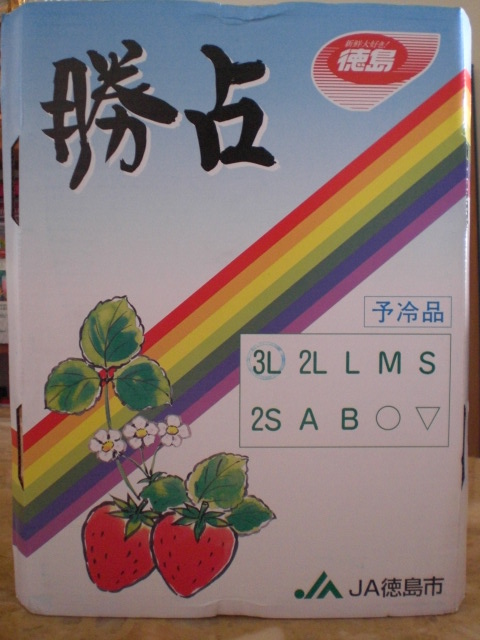 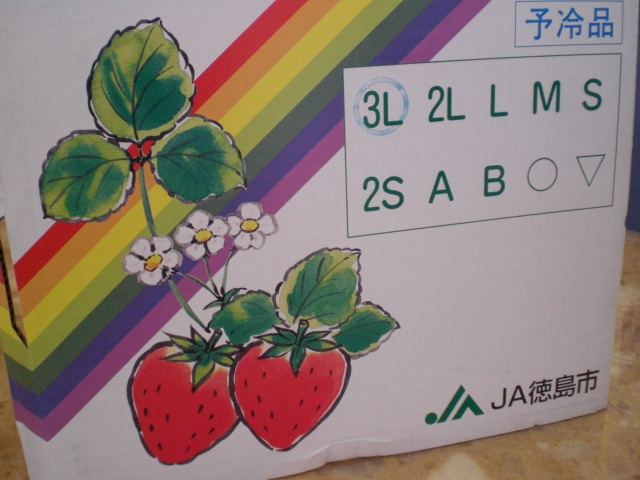 Although I'm taking Japanese 5/Business Japanese next semester, I had no idea what "さちのか" means. Therefore, I tried Googling it with "JA徳島市" and I was so happy it led me to the website of the company/farm that grows these strawberries. Although I'm taking Japanese 5/Business Japanese next semester, I had no idea what "さちのか" means. Therefore, I tried Googling it with "JA徳島市" and I was so happy it led me to the website of the company/farm that grows these strawberries.
After reading through the website, I finally got a clear idea about these strawberries. They originated from 徳島県 (Tokushima Prefecture), a prefecture of Japan located on 四国 (Shikoku Island).
品種は「さちのか」を中心に栽培されています。("さちのか" is actually a particular brand/kind/type of strawberries and they emphasize on the cultivation of this kind of strawberries in Tokushima Prefecture.)
From the website, I also learnt that these strawberries are grown with some kind of new agricultural technology and each and every single strawberry must be manually checked carefully (as they place alot of importance on quality control) before they are all packaged and put into the carton to get ready for shipping.
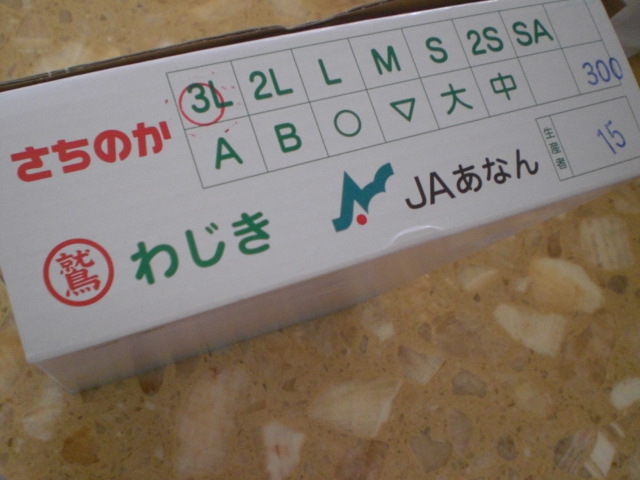  It was a fairly big carton and within it, there are four separate packets of strawberries. My mom told me that this whole carton was brought back from Japan by my sister's pilot boyfriend and a box like that costs SGD35. I don't know if that's considered pricey: SGD8.75 for each packet. I've seen those (expensive) Korean strawberries (I heard they are supposed to be quite sweet too!) being sold in Singapore's NTUC but never have I tried them because I was always satisfied with those Naturipe Farms or Driscoll's ones my mom always gets. These two are my favourite brands for strawberries as they are always sweet and juicy. It was a fairly big carton and within it, there are four separate packets of strawberries. My mom told me that this whole carton was brought back from Japan by my sister's pilot boyfriend and a box like that costs SGD35. I don't know if that's considered pricey: SGD8.75 for each packet. I've seen those (expensive) Korean strawberries (I heard they are supposed to be quite sweet too!) being sold in Singapore's NTUC but never have I tried them because I was always satisfied with those Naturipe Farms or Driscoll's ones my mom always gets. These two are my favourite brands for strawberries as they are always sweet and juicy.
Well, back to these strawberries that are flown in from Japan. Here's how a packet looks like:
 I didn't think there are that many strawberries in each packet so I guess it is quite expensive. And look at how red they are:
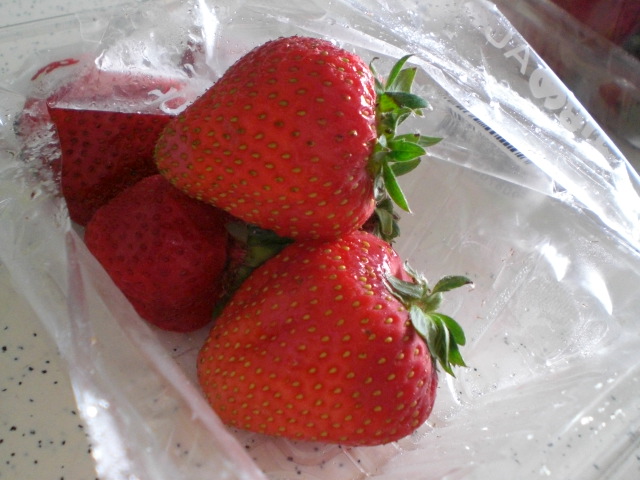 I washed up in the shortest time (ever) so that I could quickly finish my breakfast and start feasting on the strawberries. And true enough, these lengendary strawberries (they're famed throughout the whole of Japan) live up to it's name. They are really sweet and the kind of sweetness I tasted was different from the sweetness of those USA strawberries that I normally consume. These are more sugary kind of sweet and they are also slightly mushy, unlike those from USA that taste firmer. I had three at one go and I was totally blown away. I washed up in the shortest time (ever) so that I could quickly finish my breakfast and start feasting on the strawberries. And true enough, these lengendary strawberries (they're famed throughout the whole of Japan) live up to it's name. They are really sweet and the kind of sweetness I tasted was different from the sweetness of those USA strawberries that I normally consume. These are more sugary kind of sweet and they are also slightly mushy, unlike those from USA that taste firmer. I had three at one go and I was totally blown away.
甘くておいしい!! (Sweet and delicious!!) I saw these Japanese words from the website and I found that they are the perfect description for these strawberries. 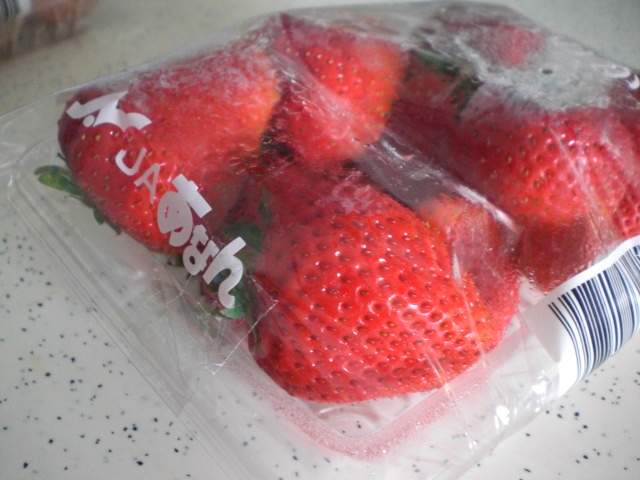 Now, I'm wishing that I would be able to have a constant supply of these さちのか strawberries. If only Singapore imports them too! Now, I'm wishing that I would be able to have a constant supply of these さちのか strawberries. If only Singapore imports them too! |
